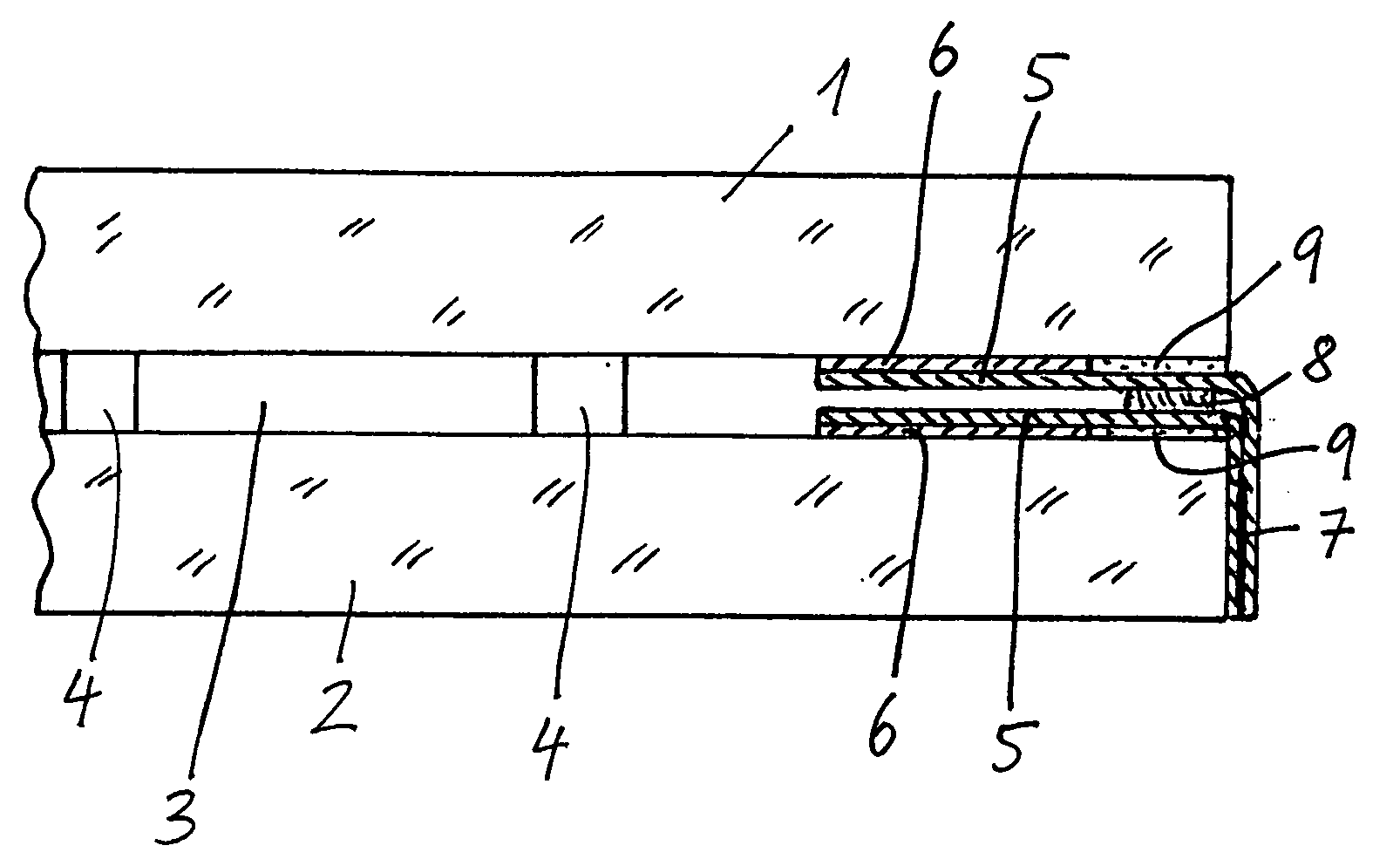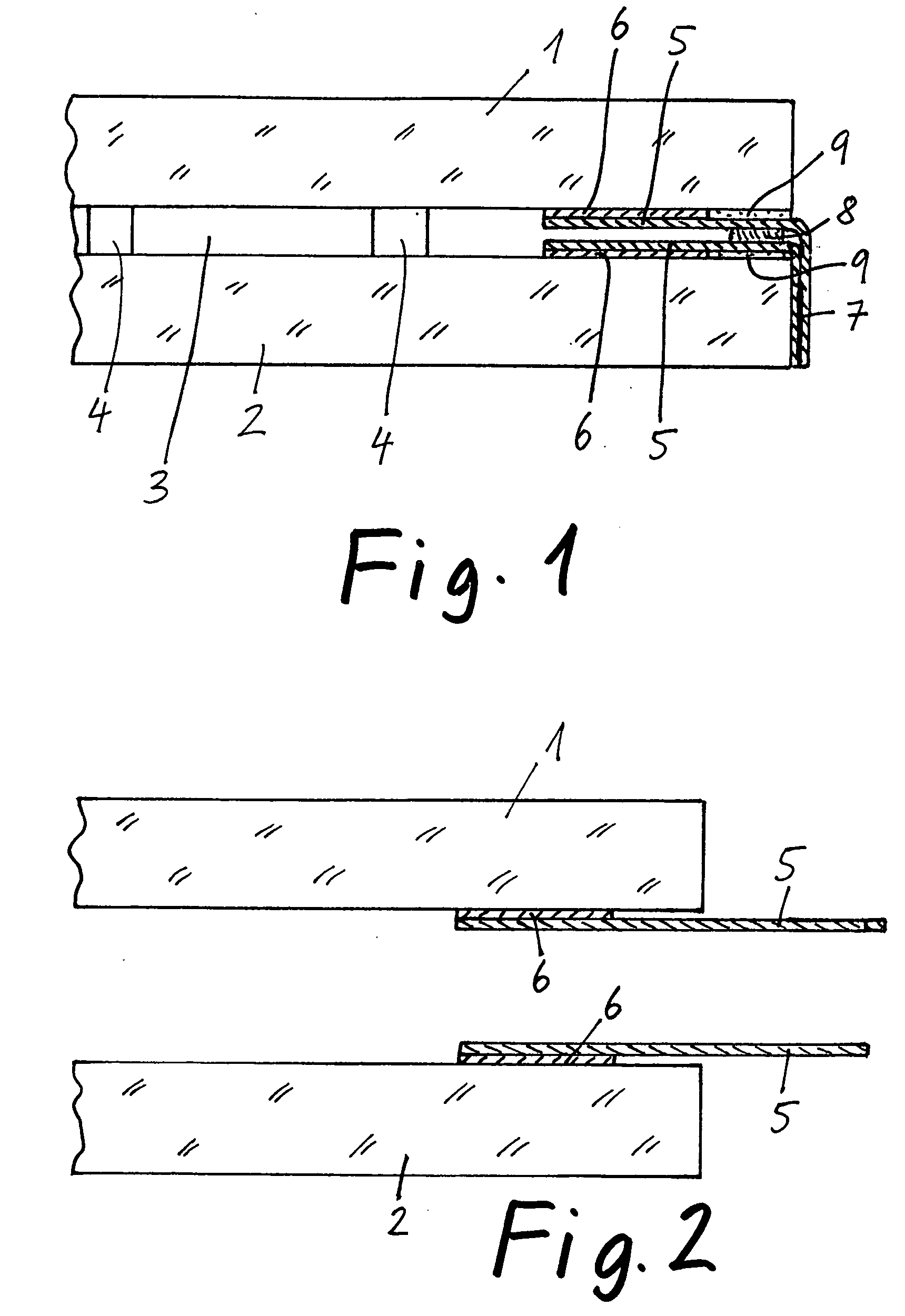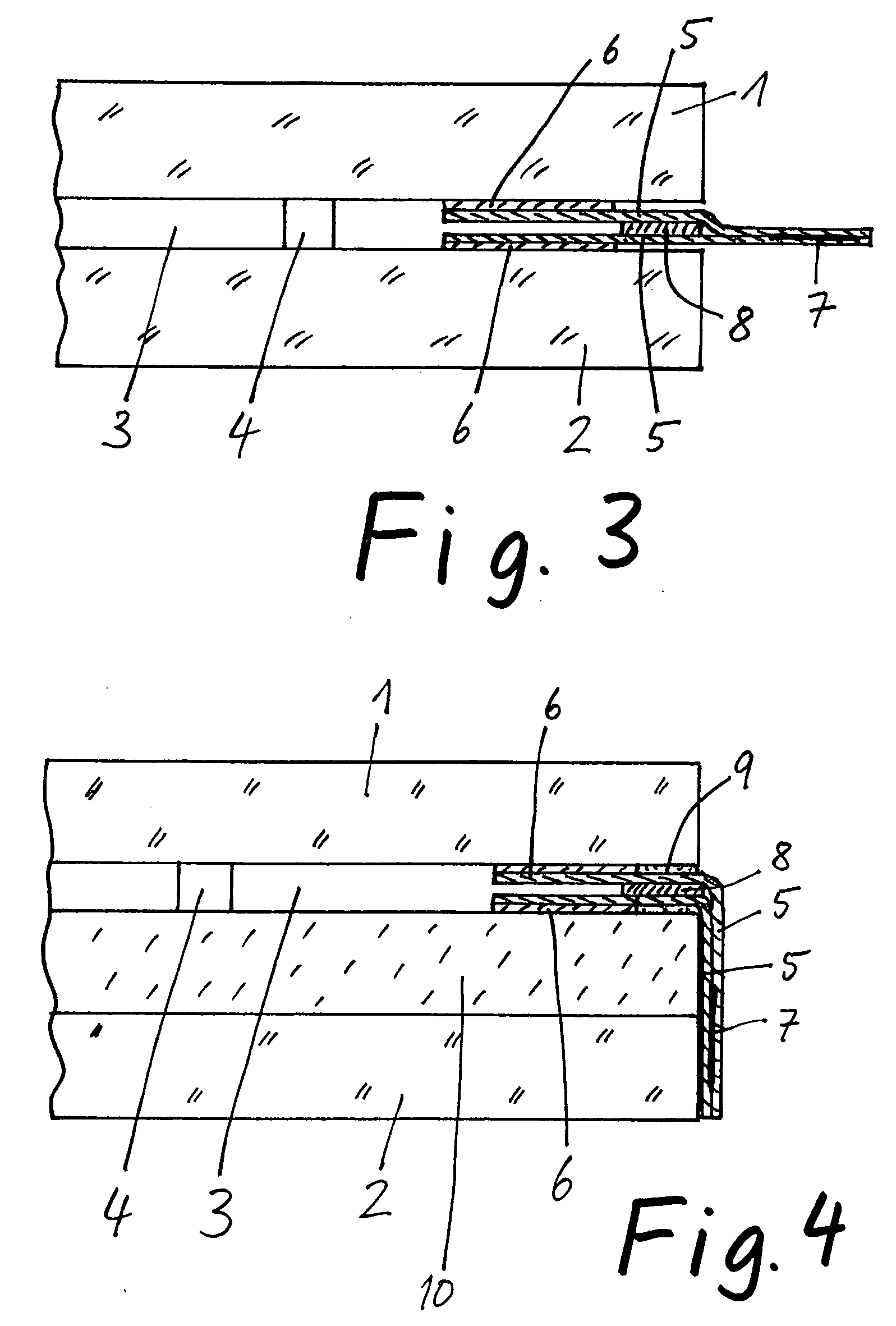Vacuum insulated glass building component and method and apparatus for its manufacture
- Summary
- Abstract
- Description
- Claims
- Application Information
AI Technical Summary
Benefits of technology
Problems solved by technology
Method used
Image
Examples
Embodiment Construction
[0028]FIG. 1 shows, in cross-section, the edge area of a vacuum insulated glass building element in the form of a vacuum insulated glass panel with a finished edge connection. The arrangement comprises a cover pane 1 (outer pane) and a bottom pane 2 (inner pane), which are separated from each other by an intermediate pane space 3. In the intermediate pane space 3, there is a vacuum. The two panes 1 and 2 are held at a predetermined distance from each other by spacers 4 which are fixed to the bottom pane 2 in a grid-like pattern for example by cementing and on which the cover pane 1 is supported. The spacers may be small glass cylinders as shown but they may also be in the form of balls and they may also consist of metal.
[0029]The cover pane 1 and the bottom pane 2 each may have a thickness of 4 mm and the intermediate space 3 may have a thickness which is preferably in the range of 0.7 mm to 1 mm.
[0030]At the edge of each of the two panes 1, 2, a metal foil strip 5 is attached in a ...
PUM
 Login to view more
Login to view more Abstract
Description
Claims
Application Information
 Login to view more
Login to view more - R&D Engineer
- R&D Manager
- IP Professional
- Industry Leading Data Capabilities
- Powerful AI technology
- Patent DNA Extraction
Browse by: Latest US Patents, China's latest patents, Technical Efficacy Thesaurus, Application Domain, Technology Topic.
© 2024 PatSnap. All rights reserved.Legal|Privacy policy|Modern Slavery Act Transparency Statement|Sitemap



